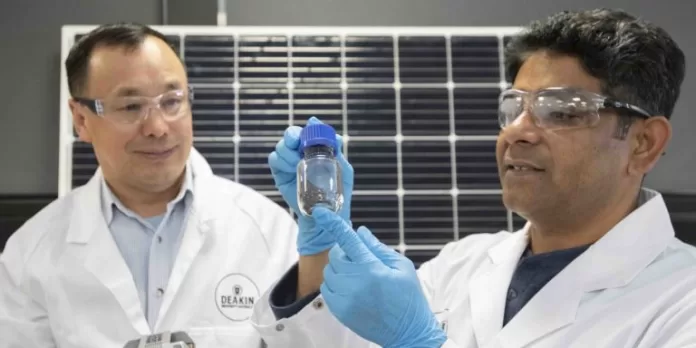Institute for Frontier Materials (IFM) researchers at Deakin University have devised what they claim is a sustainable way of extracting silicon from solar panel waste and reconfiguring it into nano-silicon, which is then used to produce high-energy anodes for lithium-ion batteries.
Silicon is only a minor component of solar panel cells, but until recently, it was impossible to extract silicon and reduce it to nano particles without employing dangerous chemicals like hydrochloric acid and nitric acid.
Ying Chen, head of the ARC Research Hub for Friendly and Reliable Energy, and Mokhlesur Rahman, a material scientist, claim to have discovered an inexpensive, effective, and environmentally safe thermal and chemical procedure to extract the silicon from solar waste.
After the silicon has been cleaned and separated, a ball milling procedure is used to decrease the particle size to nanometer levels. Once again, no dangerous chemicals are required. By combining nano-silicon with graphite, the researchers claim to have created a battery anode that increases lithium-ion battery capacity by a factor of 10.
“We are leveraging that nano-silicon to produce low-cost battery materials that will help offer higher performance, longer lasting, inexpensive battery technology crucially needed to fuel Australia’s clean energy transition,” said Rahman.
The scientists claim that this method, which they have been studying since 2019 and which has undergone extensive testing and evaluation to verify it can function and be scaled up for commercial usage, is crucial to reusing used solar cells and will avoid high-value trash from being thrown away in landfills.
High-value silicon is utilised in the fabrication of solar panel cells, however after 25–30 years of usage, the silicon gets extremely polluted and must be discarded.
We have discovered a method that, in only one day and without the use of harmful chemicals, can restore the silicon found in recycled cells to a purity of 99.9% or more.
It’s a breakthrough, according to Rahman, that might make recycling solar panels much more economically viable because it’s considerably greener, cheaper, and more efficient than any other approach now on the market.
Purifying the waste, creating nano-silicon, and incorporating it into new battery technology, as Chen put it, is “a tremendous leap forward in how we solve the problem of solar panel waste.”
Recycled nano-silicon from defunct solar panels has the potential to provide a large, long-term supply of raw battery materials. Assisting in providing energy for the buildings, vehicles, and neighbourhoods of the future.
By 2035, it is predicted that Australia’s waste stream will have received over 100,000 metric tons of used solar panels.





